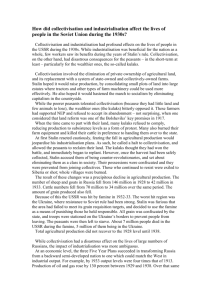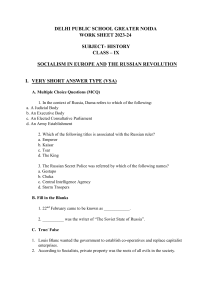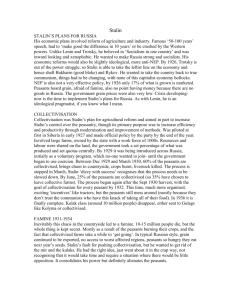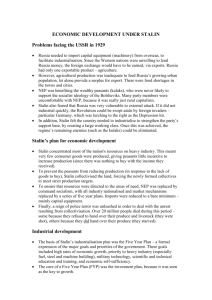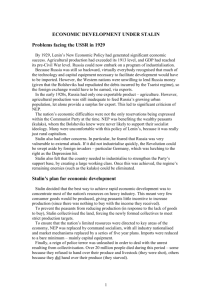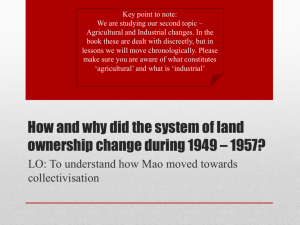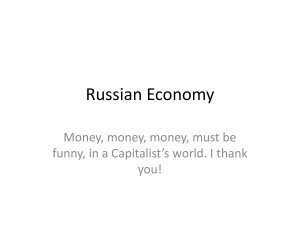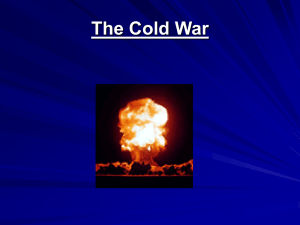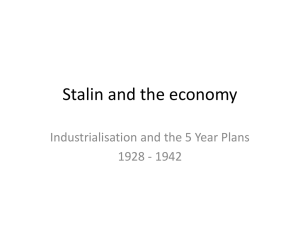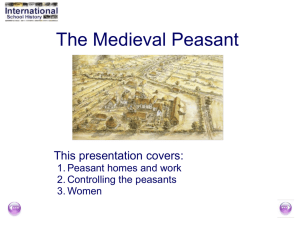Stalin`s economic policies
advertisement
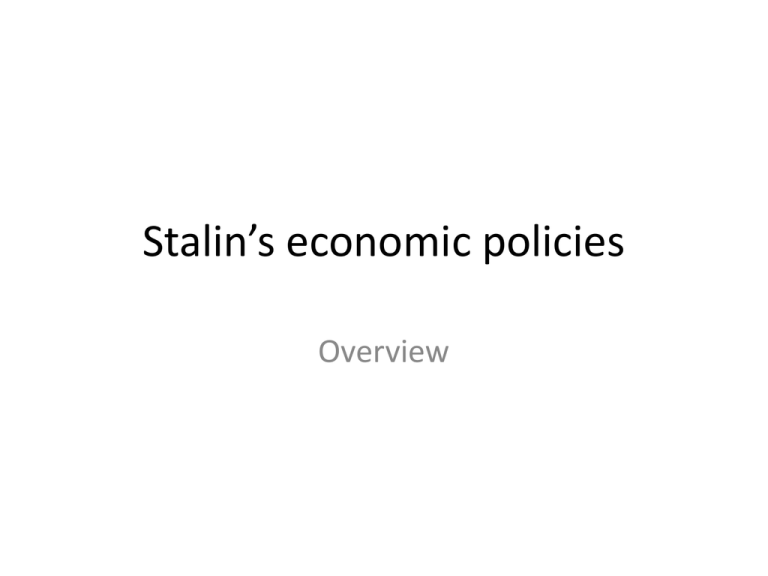
Stalin’s economic policies Overview The conflict between the ideas of Trotksky and Stalin also spilled into economics • Trotsky argued for ‘continuous revolution’ so that the USSR supported Communist revolutions in other countries as a way of bringing about ‘the triumph of communism’ which Marx had predicted and also protecting the USSR herself. Economic resources would be used on foreign policy • Stalin argued for ‘Socialism in one country’ whereby the USSR concentrated on becoming as strong as other Western States and protected herself that way. Economic resources would be used on domestic policy. Stalin’s success in the power struggle meant that his economic ideas were used • ‘We are fifty to a hundred years behind the advanced countries. We must make good this difference in ten years. Either we do it or we shall be crushed’. • How this was to be done was through the collectivisation of agriculture and the industrial 5 Year Plans. Collectivisation ~ the need • To allow the USSR to industrialise quickly what was needed were: • State funding to capitalise factories to allow them to establish, expand or purchase modern machinery • Food to feed the rapidly expanding proletariat • Therefore agricultural production had to increase and the State had to control what happened to the food: • Sell overseas to raise money • Feed the workers in the cities Soviet agriculture • In 1928 75% of all people living in the USSR working in connection with agriculture • Most farming was inefficient: – – – – Small farms Little mechanisation Poor knowledge of modern farming techniques Much at subsistence level • Top end peasants were known as Kulaks. They were rich. Approx 65% of all peasants were self-sufficient Collectivisation – the theory • The Bolshevik policy-makers were mostly urban dwellers and didn’t understand or trust the peasants. • Stalin understood that they would not be prepared to give up their land. His view, like Lenin’s, was that they should be encouraged – the difference was that he thought that they should be forced if they didn’t change voluntarily • The Government understood that large farms could work more efficiently – there would be economies of scale, modern methods including mechanisation could be used. Collectivisation – the structure • Two types of collective farms: – Kolhoze: existing farms gathered together into one large farm owned by the State; peasants live in village communities with amenities provided by the State; specialisation of tasks; wages instead of food; if the farm made a loss the peasants absorbed the financial hit. – Sovkhoze: new collective farm set up by the State; they were ‘workers’ and therefore received a wage fixed by the State; losses were covered by the State • In addition the State would set up Mechanical and Tractor Stations (MTS) to allow collective farms to hire equipment cheaply. Collectivisation - method • Most peasants (especially the Kulaks) were not prepared to collectivise voluntarily. • 27th December 1929 Central Committee issued the order to force collectivisation. • Most peasants resisted, led by the Kulak class, as the peasants had resisted War Communism and the Bolshevik Government responded as they had before. • 30th January 1930 the Central Committee issued the order ‘On Measures for the Elimination of Kulak Households in Districts of Comprehensive Collectivisation ~ this directed OGPU to ‘solve’ the Kulak ‘problem ‘ and remove any obstacles to collectivisation The ‘red holocaust’ • The Kulak class were executed, imprisoned, deported or relocated to marginal land. Prison camps, known as GULAGs were set up in Siberia. By the end of 1931 they were destroyed as a class • Once the Kulak class had been destroyed Stalin then offered the peasants in the new collective farms a concession that they could have small plots of land themselves and some animals but this was just a trick to generate more food and seed. It was promoted to the peasants as a return to the NEP • Once the Spring of 1932 arrived, collectivisation was restarted and peasants who opposed this were executed or deported to GULAGs The Famine • With the loss of the Kulak class and the disruption to the routine of agriculture brought about by collectivisation the harvest of 1932 was very poor. • Central Government set unrealistic production quotas for the collective farms and when these were not met OGPU was used to confiscate all the food available in an area. • There was a wide-spread famine across the USSR. It is estimated that a minimum of 10 million peasants died 193233. • Stalin saw this as a way of driving collectivisation on, consolidating his power and removing potential opponents Collectivisation ~ an evaluation • By 1941 almost all farming was collective • Levels of food production fell drastically, the social and economic benefits of modernisation were slow to come, millions of people died. • Most historians (such as Wood or Shukman) see this as Stalin sacrificing millions of peasants to secure his position and drive forward industrialisation. Others (such as Getty or Nunes) argue that it was necessary to protect the Communist Revolution or that it was not planned, but was instead the result of a lack of planning.
